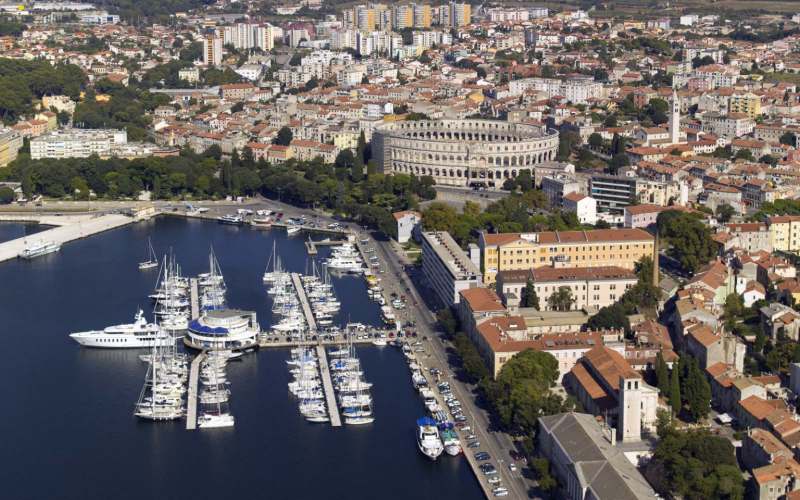Great holiday in Pula does not mean only swimming and enjoying great food and wine, there's plenty to discover when staying on this part of Istrian coast.
Pula is a growing holiday destination in Croatia and Istrian riviera. This town, with its history spanning over three millenia, today a modern centre of Istrian peninsula attracts more and more people each year which is not surprising considering its value and great holiday deals available for both short city breaks and relaxed family holidays. Booking options are numerous, whether you are looking for a charming studio downtown or you wish to spend your Pula holidays in luxury accommodation. When you settle where you are going to stay, planning on what to see during your stay is the next step and here are a few locations that, although not in the top ten sites list, one might find interesting,
When thinking about Pula and which sites to visit, ancient monuments first come to one's mind. We have already mentioned Roman past of the town and the valuable monuments left from that period, the most famous one being Arena (ancient Roman amphitheatre). Apart that, several other Roman architecture monuments are preserved and in excellent condition, such as the temple of Augustus or the 1st century AD triumphal arc, the Arch of Sergii built on the forum during the reign of the Roman emperor Augustus. Ancient monuments are all worthy of seeing and they have undeniable historical and cultural value but when you need a break from all the Roman stones and pillars there are also several other places you can visit that are not bound to the regular holiday sightseeing tours.
Austro-Hungarian Empire also took its turn in being the ruler of Pula (for almost a century) and there are many interesting locations build during that period. Pula was the main harbour of Austro-Hungarian navy which meant fortifications had to be built. Today, in Pula and its surroundings, 26 Austrian fortifications can be found. The purpose was to protect the town from sea attacks and because of that many of them were built on great locations on a high ground with excellent view so be sure to visit a few when spending holidays here: Fort Bourguignon on Monsival hill, Verduela fort on a peninsula of the same name where Pula Aquarium is located or Fort Punta Christo where exhibitions and concerts take place.
Zero strasse, an underground structure in the centre of Pula, is another location that may not sound familiar but it is nevertheless a location worthy of a visit. This intricate system of tunnels today serves as an exhibition place but in the past it was used as an arsenal and a communication means for the navy and the Austrians dug the tunnels in order to protect their naval base. This tunnel network is some 40 kilometers long and it was used throughout the Second World War as a shelter for the population of Pula during air raids. With the capacity of sixty thousand people, the tunnel system was big enough to accommodate the entire population of Pula. The main tunnel is open for visitors and it makes a nice getaway from the high summer temperatures as it is around 14 - 18 °C in there. Therefore, save this location for a visit when the heat gets unbearable, it will be a nice break and an interesting place to discover. Not many travellers are familiar with the tunnels so it's never over crowded which is another plus.
To finish off our Austro-Hungarian episode, The Naval Cemetery, dating from 1862 is also worth a visit. It is a burial site for more than 150 000 soldiers, located at Stoja, near a beautiful Valkana bay. The cemetery encompasses more than 22 thousand square meters and has many beautiful 19th century tombstone monuments and today it serves as a great monument of town's naval history. The site is protected by the Hague Convention for the Protection of Cultural Property.
Still, this is just a short overview of what Pula has to offer from this period. This town may not be big but Pula holidays offer great opportunity for discovering various different locations, stories and history.















